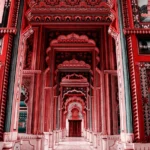Overview:
Shimla, Kullu, and Manali, which are tucked away in the center of the state of Himachal Pradesh, are iconic locations that provide an exciting fusion of adventure, natural beauty, and cultural diversity.
From the misty hills of Shimla to the pristine landscapes of Manali, these iconic hill stations have become popular vacation spots for travelers around the globe.
Packed with breathtaking views, historic landmarks, and exciting adventures, a trip from Pune to Shimla, Kullu, and Manali promises an unforgettable experience. This all-in-one travel guide highlights must-visit attractions, thrilling activities, and the best travel routes—along with recommendations for trusted travel agencies in Pune and car rental services to make your journey smooth, comfortable, and hassle-free.
The Best Time to Go to Manali, Kullu, and Shimla:
The kind of experience you’re looking for will determine the ideal time to visit these locations. Every season has its own allure:
The busiest travel season is summer (March to June), when the weather is nice and perfect for outdoor activities and sightseeing. It’s a perfect time to explore the hill stations because the temperatures range from 10°C to 25°C.
rainy season (July to September): Although the rainy season enhances the natural beauty of the countryside, it is advisable to avoid going during this time because landslides frequently occur on mountain roads, making travel challenging.
Fall (October to November): The monsoon rains stop and the sky is clear, making it a great time to visit the hill stations without the throngs of tourists. Because of the rich and colorful scenery, this is also the perfect time of year for photography.
Winter (December to February): The ideal season for visitors who enjoy snow is winter. With chances for snow activities like skiing and snowboarding, Shimla, Manali, and Kullu transform into winter wonderlands. However, be prepared for the chilly weather, as temperatures frequently fall below freezing.
Routes to Shimla, Kullu, and Manali from Pune:
There are several ways to get from Pune to Shimla, Kullu, and Manali, including via bus, train, airplane, and automobile.
By Air:
Although flying to Chandigarh International Airport, which is roughly 120 kilometers from Shimla, is more convenient, Jubbarhatti Airport, which is 22 km from Shimla, is the closest airport. You can take a bus or hire a taxi from Chandigarh to Shimla, Kullu, or Manali.
Although it is comparatively less accessible than Chandigarh, you can also fly into Bhuntar Airport, which is around 50 km from Kullu, to get to Manali.
By Train:
A direct train from Pune travels to Kalka Railway Station, a key intersection for getting to Shimla. To go to Shimla, you can take the well-known Kalka-Shimla Railway Toy Train from Kalka. This five-hour drive provides unmatched landscape views, making it an unforgettable experience.
Going to the Chandigarh Railway Station and then continuing on the road to Shimla, Kullu, or Manali is an additional choice.
By Road:
Shimla and Pune are almost 1,600 kilometers apart by car. By automobile, it takes roughly thirty to thirty-five hours. NH48 and NH44 are the most frequently used routes. The trip should be divided into two sections, with overnight stops at handy locations such as Udaipur or Jaipur.
Kullu and Manali are around 260 and 300 kilometers away from Shimla, respectively, and may be reached by bus or private vehicle rental.
Examining Shimla: The Hill Queen
One of India’s most adored hill stations is Shimla, which was formerly the summer capital of British India. It is well-known for its cold climate, colonial charm, beautiful scenery, and laid-back atmosphere.
Mall Road: A trip down the Mall Road is a must-do when in Shimla. This busy boulevard is dotted with eateries, cafes, and shops that sell a variety of regional goods and handicrafts. With a view of the surrounding hills, the lively market is the perfect spot to spend the evening.
Atop Jakhoo Hill, this historic temple honoring Lord Hanuman provides a breathtaking perspective of Shimla and the neighboring mountains. Both spiritual seekers and photographers should make time to visit the hilltop, which is adorned with a colossal statue of Hanuman.
Ridge and Christ Church: Located in the center of Shimla, the Ridge provides a broad perspective of the verdant valley and the snow-capped mountains. One of the oldest churches in North India and a stunning example of neo-Gothic architecture is the Christ Church, which is situated on the Ridge.
Kufri: Only 16 miles from Shimla, Kufri is well-known for its adventure sports, which include go-karting, skiing, and tobogganing in the winter. It becomes a verdant haven with nature hikes and horseback rides in the summer.
Kullu: The Gods’ Valley
Often referred to as the “Valley of Gods,” Kullu is renowned for its peaceful Beas River, temples, and breathtaking scenery. Kullu serves as the entry point to Manali as well.
Raghunath Temple: One of Kullu’s most respected pilgrimage sites, the Raghunath Temple is devoted to Lord Rama. The temple complex is a significant representation of the area’s spiritual legacy and provides stunning views of the Kullu Valley.
Great Himalayan National Park: A UNESCO World Heritage Site, the Great Himalayan National Park is a sanctuary for hikers and animal lovers. In addition to offering a number of hiking paths and chances for birdwatching, this park is home to over 375 different species of plants and animals, including the endangered snow leopard.
Kullu Dussehra: Don’t miss the well-known Kullu Dussehra festival, a lavish celebration of regional customs and culture, if you travel during the fall. This event, which features a variety of dance performances, music, and colorful processions, draws travelers from all over the world.
Manali: India’s Adventure Capital
Manali is well known for its stunning scenery, lively tourism culture, and snow-capped peaks. Manali has something for everyone, regardless of your preference for adventure or leisure.
Rohtang Pass: This high mountain pass, which links the Lahaul and Spiti Valleys with the Kullu Valley, is one of the area’s most well-known sights. A visit to Rohtang Pass provides exhilarating vistas of ice peaks and glaciers, as well as the opportunity to engage in snow sports. Seasonally, it is open from May to November.
Solang Valley: Solang Valley is an adventure lover’s dream, recognized for its range of sports such as skiing, paragliding, zorbing, and trekking. It turns into a wintry paradise ideal for snow sports during the winter months.
Hidimba Temple: The Hidimba Temple, located in the forested area of Manali, is an old temple dedicated to Hidimba, the wife of Bhima from the Mahabharata. The temple is one of the most tranquil places in Manali because of its distinctive architecture and tranquil surroundings.
The cedar woodlands that encircle the shrine contribute to its enchanted ambiance.
An old shrine to Hidimba, a figure from the Indian epic Mahabharata, is situated in the charming town of Manali. A key figure in the epic’s plot was the demon Hidimba, the wife of Bhima (one of the Pandava brothers). In addition to being an important place of worship, the temple represents the region’s rich cultural legacy.
Origins and Mythological Significance: The Mahabharata is the primary source of Hidimba’s narrative, in which she is portrayed as a strong and enchanted woman. The tale states that Hidimba and her brother, Hidimb, a formidable monster, dwelt in the Manali forests.
The strongest of the brothers, Bhima, battled and killed Hidimb when the exiled Pandavas visited this jungle. Bhima’s power and bravery captivated Hidimba, who fell in love with him and proposed marriage.
After some consideration, Bhima consented to marry her on the understanding that his power would be passed down to their offspring. Ghatotkacha, the son of this union, went on to play a major part in the Mahabharata war.
This strong character of mythological and cultural significance is the object of devotion at the Hidimba Temple.
It serves as a reminder of the close relationship that exists between the Mahabharata and the Himalayan scenery.
Features of the Temple’s Architecture: The Hidimba Temple is different from other temples in the area due to its distinctive architectural style.
The temple’s architecture is Pagoda-style, with outward-curving wooden shingles that give it a layered look.
The temple’s ethereal atmosphere is enhanced by its location in the middle of a thick cedar forest. Despite lacking any statues or idols of the goddess herself, the building is devoted to Hidimba. Rather, a big rock that is thought to symbolize her is kept in the inner sanctuary.
Encircled by dense trees, the temple’s surroundings foster a calm and reverent ambiance. As enthralling as the temple itself is the natural beauty around it, which provides a sense of peace that gives the location an unearthly quality.
Why You Should Visit Hidimba Temple:
If you want to experience the region’s spiritual and cultural fabric, you must include the Hidimba Temple in your Shimla-Manali itinerary. Here are some reasons to go:
Rich Mythological and Cultural Significance: The Mahabharata’s amazing tales are vividly portrayed in the Hidimba Temple. It gives you the opportunity to explore the mythos of one of the epic’s lesser-known but significant characters. For those who enjoy mythology and history, this temple offers a singular window into the past.
Architectural Beauty: The temple’s magnificent architecture in the pagoda style is a draw in and of itself.
With its elaborate carvings and wooden design, it gives a unique aesthetic experience in contrast to many other temples in India. The temple is made more beautiful by the contrast between its architecture and the surrounding landscape of tall cedar trees.
Calm and Peace: The temple’s location in a serene woodland makes it the perfect destination for people looking to escape the hustle and bustle of Manali’s busier tourist districts.
It is the ideal location for meditation or just taking in the splendor of the natural world.
Cultural Link to Manali’s Landscape: Manali has a lot to offer both historically and culturally, given its strong ties to mythology and the Mahabharata. The foundation of every cultural study of the region is a visit to the Hidimba Temple, which gives you the opportunity to investigate this link firsthand.
Close to Other Attractions: Old Manali, another well-liked location that offers tourists a sense of the area’s rustic beauty, is not far from the Hidimba Temple. Because of its proximity, visiting the temple can easily be combined with touring other areas of Manali, including the well-known Solang Valley, Old Manali, and Manu Temple.
A Spiritual Experience: The spiritual ambiance of the Hidimba Temple provides a sense of connection with the region’s historic customs and rituals, regardless of your religious beliefs.
This temple is a must-see for everyone curious about the spiritual nature of the Himalayas.
A must-see when visiting Manali is the Hidimba Temple. This temple provides a great deal of cultural value to your vacation, whether you’re drawn in by the mythology, the stunning and distinctive building, the serene settings, or the chance to engage with the rich history of the Mahabharata. When touring the captivating Himachal Pradesh highlands, one should not miss this ideal fusion of spirituality, history, and environment.
Manu shrine: Situated in the historic Manali hamlet, this shrine is devoted to the sage Manu. For people interested in spiritual and cultural legacy, it is an important location and one of the most venerated temples in the area.
Old Manali: Old Manali is a lovely getaway for anyone looking for a more sedate and rural experience. There are several charming cafes, guesthouses, and beautiful views of the Beas River in the neighborhood.
Activities You Must Do in Shimla, Kullu, and Manali:
Camping and Trekking: Shimla, Kullu, and Manali are surrounded by a number of trekking routes. Trails like the Great Himalayan National Park Trek (Kullu), the Beas Kund Trek (Manali), and the Churdhar Peak Trek (Shimla) are suitable for both novice and experienced hikers.
Adventure Sports:
Snowboarding and skiing in the Solang Valley.
Kullu paragliding.
In the Beas River, rafting.
Manali mountain biking.
Shopping: Look for mementos like as wooden artifacts, hand-woven rugs, and woolen shawls in the local marketplaces. Manali’s local markets and Shimla’s Mall Road are excellent shopping destinations.
Spa and Wellness: There are a lot of spa and wellness facilities in Manali and Shimla where you may rest and rejuvenate with traditional Ayurvedic massages or treatments.
In summary:
More than just a tour, a travel from Pune to Shimla, Kullu, and Manali is an exploration of a world rich in adventure, natural beauty, and culture.
This journey has something to offer everyone, whether you’re exploring the colonial grandeur of Shimla, losing yourself in the spiritual allure of Kullu, or looking for an adrenaline rush in Manali. Your trip to these charming hills will surely be one to remember for a lifetime if you pick the ideal time to visit and carefully arrange your itinerary.






